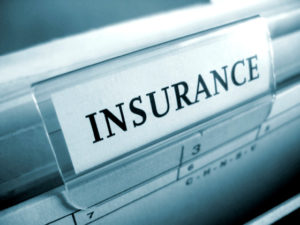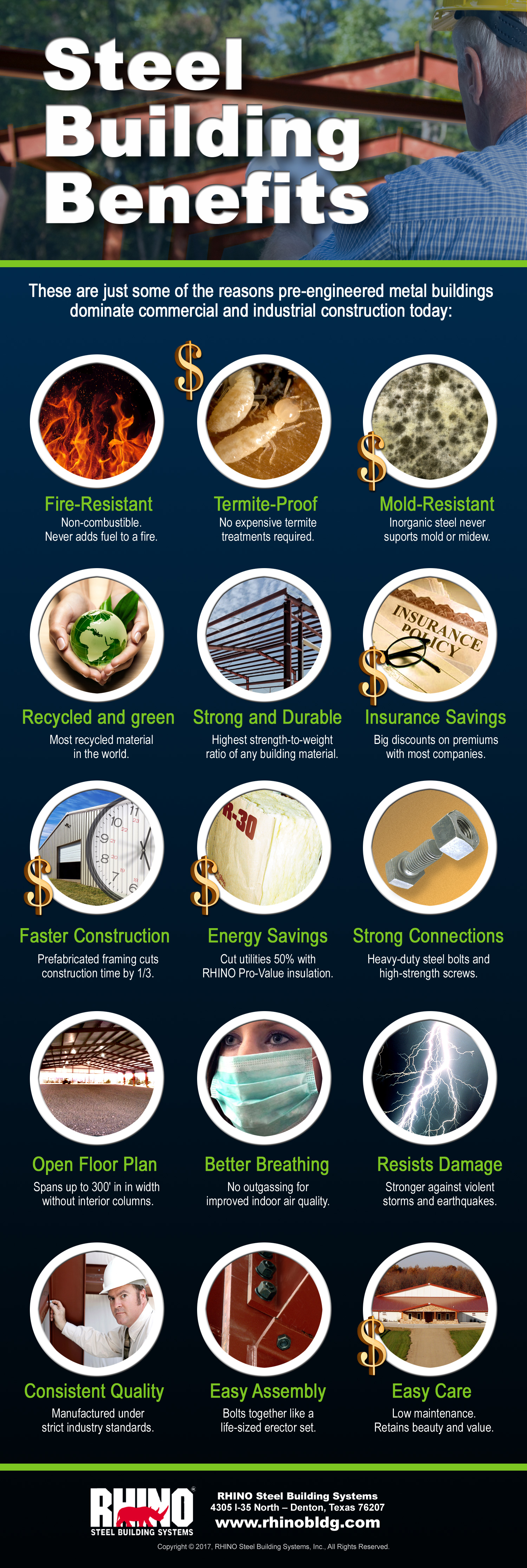How a Noncombustible Building of Steel Cuts Insurance Costs
Did you know that a metal building costs to insure than structures that are less fire-resistant? In fact, insurance for commercial-grade steel buildings costs up to 30% less than other building systems.
Why a Fire-Resistant Metal Building Costs Less to Insure
 Every property owner finds insurance expensive today.
Every property owner finds insurance expensive today.
Experts predict property insurance prices will rise 10%-30% in 2021, in the wake of all the recent riots, hurricanes, floods, and wildfires.
Insurance companies base their rates on several factors that speak to the amount of risk. Basically, the lower the risk of damages to your structure, the lower your insurance premiums.
The number one factor determining the insurance price is usually the structural type.
Classifications by Building Type
The Insurance Services Office (ISO) compiles the data used to develop insurance rates. The ISO sorts buildings into six classifications:
 Classification 1-FRAME: Buildings constructed with combustible wood— or slower-burning composite materials— for exterior walls, floors, and roofs.
Classification 1-FRAME: Buildings constructed with combustible wood— or slower-burning composite materials— for exterior walls, floors, and roofs.
Because wood or composite structures typically burn or collapse more easily, these structures pay the highest cost-per-square-foot insurance rates. In addition, combustible materials like wood also add fuel to a structural fire, increasing the amount of damage.
Classification 2- JOINTED MASONRY: The structural support rests on concrete blocks, pre-cast concrete walls, or load-bearing bricks. However, the floors joists are typically wood or light-gauge steel.
Classification 3- NONCOMBUSTIBLE: The outer walls consist of a noncombustible material. Noncombustible or slow-burning materials create the floors and the roof.
Classification 4- MASONRY NONCOMBUSTIBLE: In this type of structure, cinder blocks, poured concrete, or load-bearing brick forms the outer walls. The floors typically use structural steel or poured concrete with steel.
Classification 5- MODIFIED FIRE-RESISTIVE: This category generally denotes multi-floored structures occupied by large numbers of people, like high-rises and shopping malls. The construction includes extra fireproofing methods.
Insurance rates for modified fire-resistive buildings are lower than Classifications 1-4. However, the greater building costs often override the lower insurance rates.
Classification 6- FIRE-RESISTIVE: As above, but includes even more fire-prevention materials and techniques.
For structures 15,000 square feet and smaller, insurance companies base their rates solely on the six classifications above. Insurers assess buildings over 15,000 square feet individually, case by case.
A Pre-engineered Steel Noncombustible Building is a Class 3 Structure
Commercial-grade, low-rise pre-engineered steel buildings generally fall under the Classification 3 group. Typically, these buildings earn insurance discounts of about 30% over the lumber-framed buildings in Classification 2.
Since fire is a primary concern of insurance companies, adding fire-protection features like smoke alarms and sprinkler systems may reduce premiums even more.
Why Fireproof Steel Building Insurance Costs Less
Insurance businesses estimate premiums based on the likelihood of a payout and the projected cost of replacing the structure.
Consequently, the more damage-resistant your structure, the less their risk, so the lower your premiums.
There are two reasons steel building costs less to insure.
First, pre-engineered metal buildings stand strong against adversity. Here is how:
- The greater strength-to-weight ratio of steel provides built-in resistance to structural damage from earthquakes, high winds, and heavy snows.
- A steel noncombustible building is made of more fireproof building materials. Therefore, a commercial-grade metal building is more resistant to fire damage, too.
- Since steel offers no resistance to current, it is safer than wood when struck by lightning. In a properly grounded metal building, lightning flows through the framing, passing harmlessly into the ground.
- As an inorganic material, steel even repels damaging mold, mildew, and wood-hungry termites!
Lower Insurance Rates Mean a Steel Building Costs Less Year after Year
Secondly, a prefab metal building costs less to build than structures made with other building materials. Consequently, it costs the insurance company less to replace a pre-engineered metal building. Therefore, steel building insurance should be less expensive.
Insurance rates do vary from company to company.
When getting an insurance quote, be sure the agent knows the specific type of structure you are insuring. Also, let the agent know about any additional fire safety measures included in the construction.
Conclusion
A noncombustible pre-engineered metal building costs far less to insure than lumber or joisted masonry buildings.
Discover All the Ways Steel Building Costs are Lower
 Talk to a RHINO steel building adviser today about your next building project. You can depend on their expertise to get you the right structure at the right price.
Talk to a RHINO steel building adviser today about your next building project. You can depend on their expertise to get you the right structure at the right price.
Call RHINO now at 940.383.9566 for details and a free quote.
(Updated 11-11-2020. Originally published 5-1-2018.)
